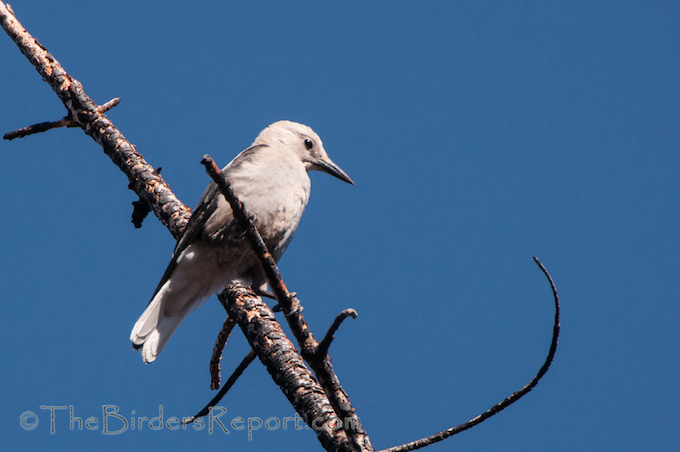 Clark’s Nutcracker (Nucifraga columbiana) photos by Larry Jordan
Clark’s Nutcracker (Nucifraga columbiana) photos by Larry Jordan
This handsome corvid was named after Captain William Clark, the explorer of Lewis and Clark fame, in 1805. It inhabits the high montane regions of the western United States and Canada, preferring coniferous forest dominated by one or more species of large-seeded pines1. Click on photos for full sized images.
Our Audubon group makes an annual outing to Lassen Volcanic National Park where we usually find Clark’s Nutcrackers feeding on pine nuts of one of the several conifer species found in the park. Even though they have several adaptations for their specialized pine seed diet, the Clark’s Nutcracker is an opportunistic forager. They also eat insects and spiders, small animals, and carrion.
Their special adaptations include a long, sharp bill, used to open conifer cones, extract seeds, and place seeds in caches, and a sublingual pouch, used to transport seeds to cache sites. Individual Clark’s Nutcrakers can store up to 90,000 whitebark pine seeds per year for later retrieval2.
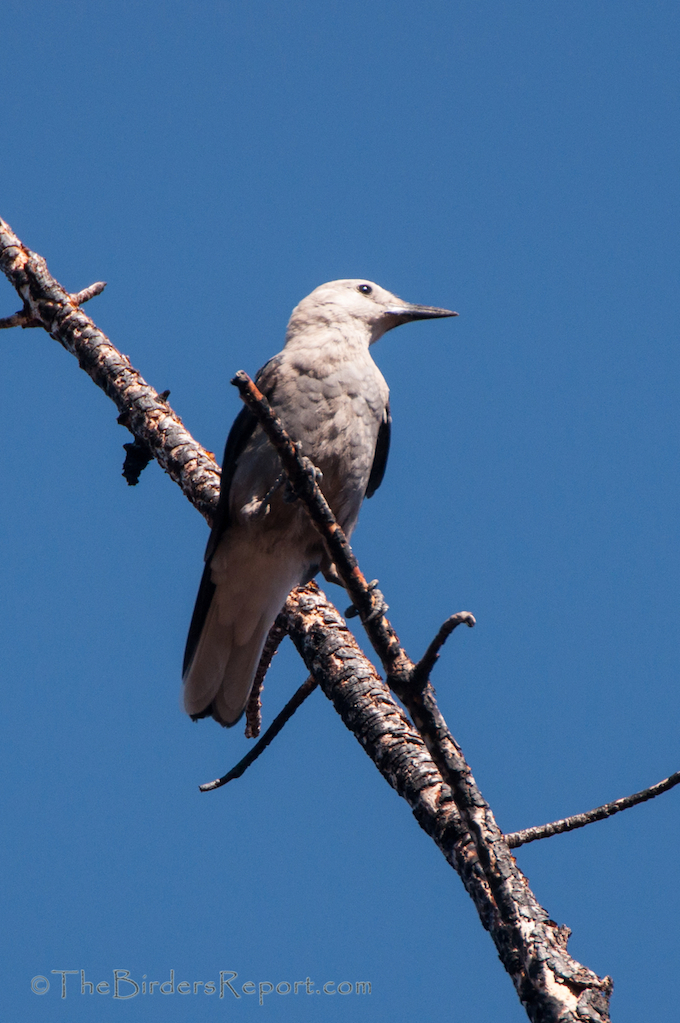 Unfortunately, last year’s Audubon trip was cancelled due to the Reading Fire which burned over 28,000 acres before it was contained. This is a photo of the area near Hat Lake where we not only found the Clark’s Nutcrackers but also the Black-backed Woodpecker and Williamson’s Sapsucker.
Unfortunately, last year’s Audubon trip was cancelled due to the Reading Fire which burned over 28,000 acres before it was contained. This is a photo of the area near Hat Lake where we not only found the Clark’s Nutcrackers but also the Black-backed Woodpecker and Williamson’s Sapsucker.
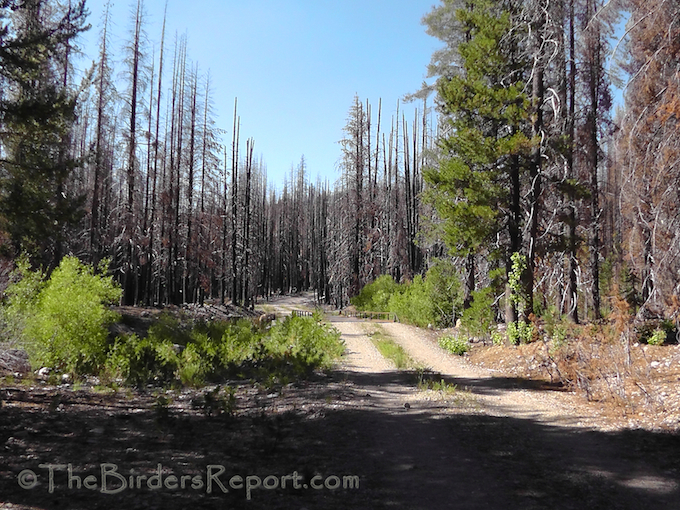 Lassen Volcanic National Park Reading Fire Burn Area Near Hat Lake
Lassen Volcanic National Park Reading Fire Burn Area Near Hat Lake
I recorded a video of a group of Clark’s Nutcrackers foraging near the burned area at the end of July. In the beginning of the video you will see the bird foraging nuts from the cones by hopping from cone to cone, then swallowing the seed or pounding it open between its feet. In the second half of the video (in much better light) the bird forages for insects and arthropods behind the bark. If you listen carefully you can hear the constant, almost clock like sound of the bark beetle munching on the tree I’m standing next to.
Finally, I am adding a photo from Wikipedia Commons of a Clark’s Nutcracker landing with its wings spread so you can see its distinctive field marks. Photograph taken by Michael Sulis, July 9th, 2006 near McNeil Point, Mount Hood, Oregon Cascades.
To see more great bird photos from around the world, check out Wild Bird Wednesday and The Bird D’pot!
References: 1Birds of North America Online, 2Lassen Volcanic National Park Conifer Guide

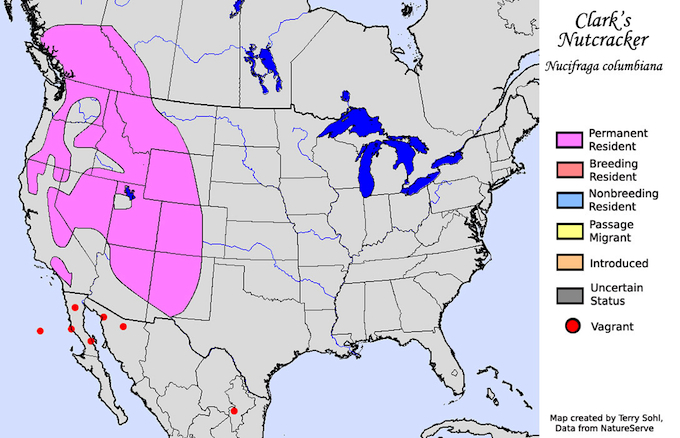
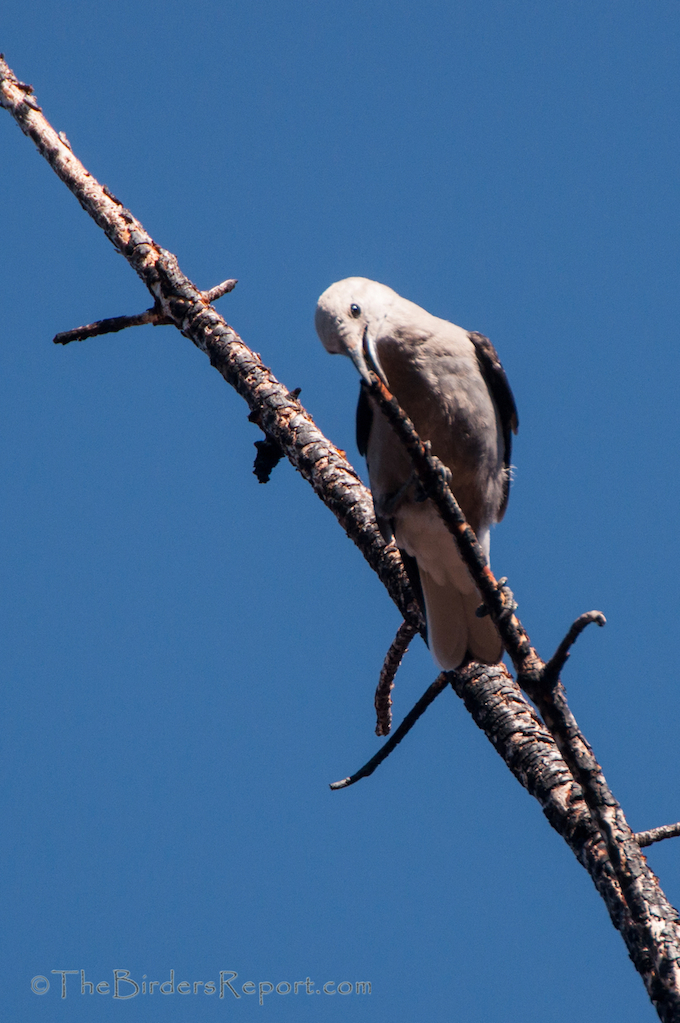
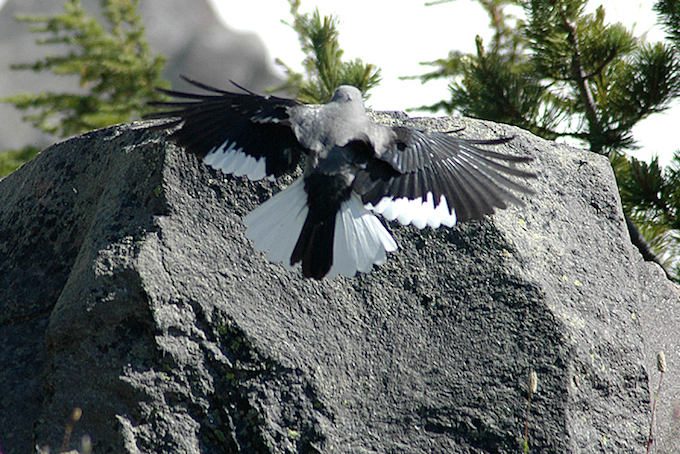








Comments on this entry are closed.
I adore these Nutcrackers! Wonderful post Larry.
Great series!! I got sidetracked in the wolf stupidity in Washington State. Almost forfot to come back. Boom & Gary of the Vermilon River, Canada.
Wonderful post on the Nutcracker, Larry! Beautiful photos!
Larry, very nice article and superb photos! Almost makes me want to leave the warmth and humidity of Florida for a bit………almost. 🙂
striking bird and a great post
HI Larry I have never seen this bird so thanks for sharing this informative post. Loved the video and the last shot is superb.
he’s quite pretty in his muted color scheme.
Beautiful photos. I really like the last one.
Hi Larry, I love these birds and maybe when we travel to the NW we may spot some. You are fortunate to have them near by…fun to watch kind of birds. Hope you are doing well~
Great looking bird – this is one of the few birds that you post that I have seen!
I had (rather stupidly) forgotten that people could be on holiday “up north”!
Cheers – Stewart M – Melbourne
Thank you so much for visiting my blog and commenting on the Anna’s. I am just now getting to the comments made on that post (I am horribly behind!) I wanted to tell you how much I appreciate you helping me understand the difference between a first year Anna’s and a female. It was so kind of you to let me know! I am not a real birder, as I am sure you guessed, but a lady who can’t get out much and has a 100% disabled hubby, and we mostly bird from our front porch. But, I’m so thankful we have the Anna’;s as regular visitors! Love this interesting bird in your post! You gave lots of wonderful info, and some great photos and video! Thank you!